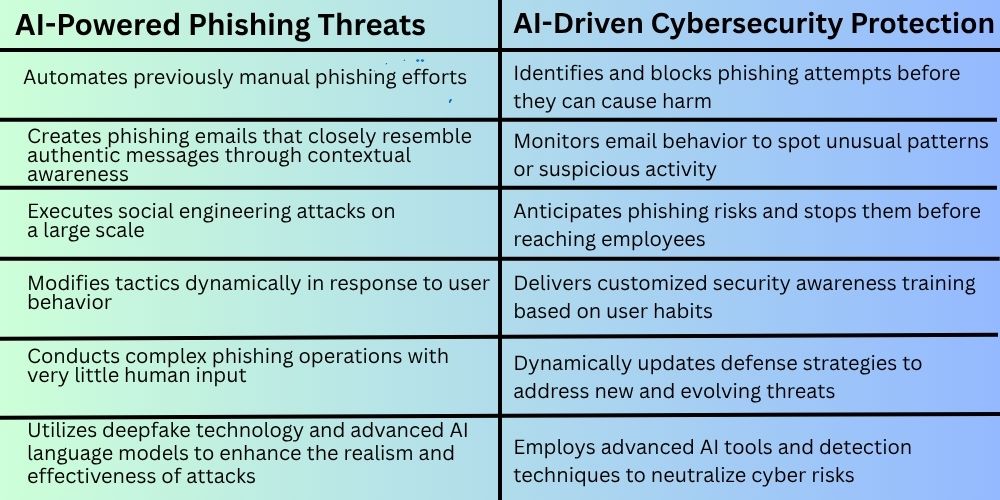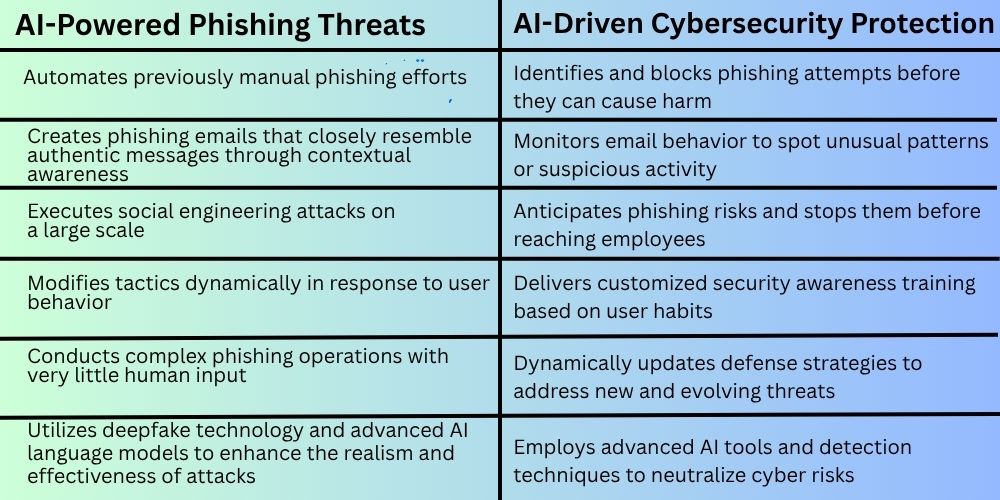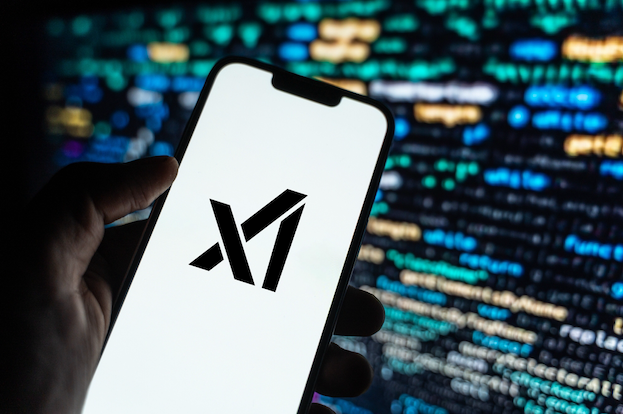Is AI making phishing emails more convincing?
“Was this you? Please confirm your identity.
Someone just requested a password reset.
CREATE A PASSWORD
You’ll use it to log into: XXXXXXX
Didn’t make this request? Click here for help.”
Sound familiar?
Chances are, you’ve seen emails like this—ones that demand quick action and spark a bit of panic. If your response was to ignore or delete it, great! You’re one step ahead in keeping yourself secure. But if you’ve ever clicked without thinking, you already know how risky that one action can be.
When it comes to cybersecurity, two age-old sayings come to mind:
“Prevention is better than cure” and “Your safety starts with you.”
And they couldn’t be more accurate.
Whether it’s emails, messages, or phone calls, phishing attempts are designed to lure you into handing over your data. And just one careless click can tip the scales in favour of the scammers.
India: A Hotspot for Phishing Threats
Here’s something to chew on: India ranked third globally in phishing attacks in 2023, with a shocking 79 million attempted attacks. On average, Indians spend around 105 minutes per week just trying to verify if messages are genuine. Even more concerning—82% of users admitted to clicking suspicious links, even though they were aware of the risks.
Now that’s alarming. One mistake—and the hackers win.
The technology sector in India has been hit the hardest, accounting for a third of all phishing incidents last year, as reported by cybersecurity firm Zscaler.
The AI Angle: Smarter Tools, Smarter Scams
Thanks to the rise of freely available AI tools, scammers are no longer stuck with broken grammar and poorly written messages. With tools like ChatGPT, Copy.ai, and Grammarly at their disposal, today’s phishing emails look polished, professional, and frighteningly real.
What once looked suspicious is now scarily perfect—no typos, no awkward language. Just clean, convincing communication designed to trap you.
We’ve moved from amateur scams to sophisticated, AI-polished messages that fly under the radar of traditional security systems.
So, How Much of This Is Really AI?
It is estimated that 2.5 million users have encountered phishing attacks, according to Hoxhunt, which analysed millions of malicious emails from 131 countries. Out of which, 0.74% to 4.7% were verified to be crafted by AI.

So yes—human-made attacks still dominate. But AI is making it easier for bad actors to launch scams. In this way, even unskilled attackers can generate professional-quality phishing emails.
Today, the numbers may seem small—but the threat is growing fast.
We’re Not in the Clear Yet
Remember the QR code phishing boom of 2023? It started off slow and suddenly blew up, making up over 20% of all phishing campaigns in just six months. That’s how fast things can shift in the cyber world.
The most dangerous aspect of AI-powered phishing is its scale.
Old-school phishing required time and effort. Now, with AI, scammers can generate thousands of hyper-personalised messages in seconds, tailor-fit for each target.
The Rise of Multi-Channel Attacks
Here’s where it gets chilling.
AI-fuelled attacks aren’t limited to emails anymore. We’re seeing a new wave of multi-pronged attacks that blend:
- Emails that match the tone of your company
- Voice deepfakes mimicking executives
- Video deepfakes simulating real meetings
- Live chat manipulation that feels eerily human
This multi-channel strategy makes it harder than ever to detect an attack—because it’s not just one email anymore. It’s an experience, and it’s built to deceive.
Where Do We Stand with AI Phishing?
Let’s break it down:
- AI-generated phishing is getting sharper – It’s still in the minority, but it’s getting better, faster, and harder to detect.
- Tech alone won’t save us – A good mix of smart tools and smarter people is your best defense.
- Culture beats compliance – Companies that invest in training and awareness programmes are far more prepared to handle evolving threats.
- The threat is changing daily – If you’re not adapting, you’re falling behind.
- Time to act is now – Don’t wait for tomorrow. The risks are already here.

It’s Not Just the Attackers Using AI
Attackers use artificial intelligence to automate and scale their scams. But cybersecurity pros are fighting fire with fire—deploying AI-enhanced tools to detect, analyse, and block these threats faster than ever.
Why People Still Matter More Than Ever
Even with all this technology, humans remain the biggest risk—and the biggest defense.
Security isn’t just about firewalls and filters. It’s about people knowing what to look for, feeling confident to report something suspicious, and understanding the impact of a single click.
We need a culture that:
- Encourages awareness, not fear
- Promotes reporting, not silence
- Emphasizes training, not just compliance
- Evolves constantly with the threat landscape
Here’s How to Stay a Step Ahead
Staying safe means going beyond basic filters. Try this checklist:
- Examine email content closely – Look for urgency, an unusual tone, or context that doesn’t make sense.
- Verify requests independently – Call or message your contact directly before acting on unexpected requests.
- Don’t trust appearances – AI-written messages often appear flawless. It’s the details that reveal them.
- Check before you click – Hover over links; never download files from untrusted sources.
- Use smarter security solutions – Look for tools that use behaviour analysis, not just spam detection.
What Companies Need to Do Now
To truly protect your organisation, your defenses must evolve:
- Adopt next-gen AI tools – Ones that can detect AI-created templates, analyse patterns, and flag social engineering tactics.
- Run modern training programmes – Simulations using real-world scenarios, AI-generated messages, and deepfake content.
- Offer instant feedback – Let employees know right away when they’ve flagged (or missed) something risky.
- Train for deepfake threats – Because those aren’t sci-fi anymore—they’re happening now.
Protegent Total Security – A Smarter Defense for AI-Driven Phishing Threats
- Intelligent Email Protection: Blocks AI-generated phishing emails that mimic genuine messages with near-perfect grammar and formatting.
- Real-Time Link Scanning: Analyses URLs in emails and messages to detect malicious or spoofed links, even if they appear legitimate.
- Contextual Behavior Analysis: Detects suspicious patterns and sender behaviour that often accompany AI-generated scams, such as unusual timing or request urgency.
- Anti-Spoofing Technology: Prevents attackers from impersonating trusted contacts or domains often used in phishing attacks.
- Attachment Sandboxing: Opens and inspects email attachments in a secure environment to block malware or ransomware payloads hidden inside.
- Dynamic Threat Intelligence: Continuously updates phishing definitions using global threat feeds, including those tracking AI-enhanced scam patterns.
- Zero-Day Phishing Detection:Identifies and blocks new, never-seen-before phishing attacks that use generative AI tools to bypass traditional filters.
- Multi-Layered Email Filtering: Applies advanced filters to detect social engineering, fake login pages, and deepfake prompts embedded in emails.
- Secure Browser Environment: Warns users or blocks access to phishing sites generated by AI that mimic trusted brands and portals.
- Awareness Integration Support: Complements internal phishing training programmes by reinforcing safe email habits and warning users in real-time.
Looking Ahead
Phishing in 2025 is on a whole new level. Attackers are shifting focus from individuals to businesses, using realistic emails, attachments, and AI-powered tools to get through even advanced defenses.
And while traditional filters still play a role, they’re no longer enough.
With a combination of up-to-date training, real-time monitoring, and robust security solutions like Protegent Total Security, your employees can be transformed into your strongest line of defense.
Remember—AI-generated phishing isn’t a future problem. It’s already here.
Are you ready to fight back?





